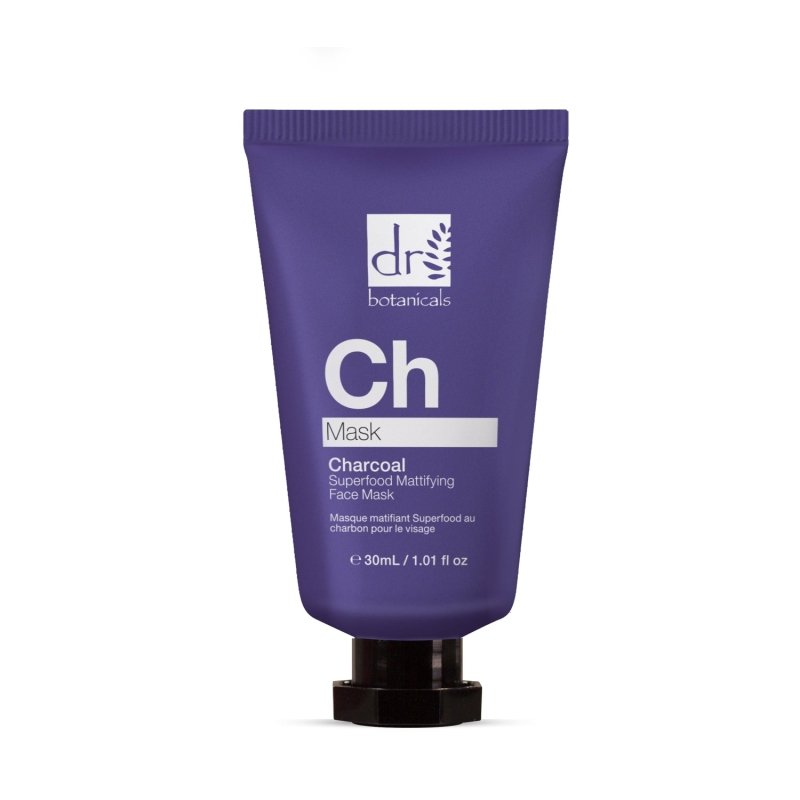
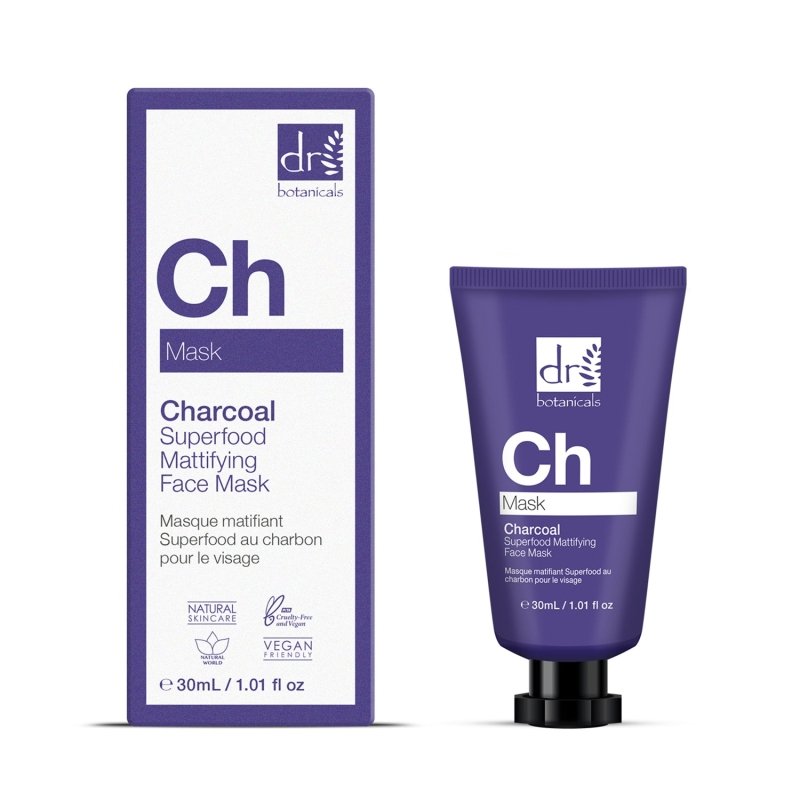
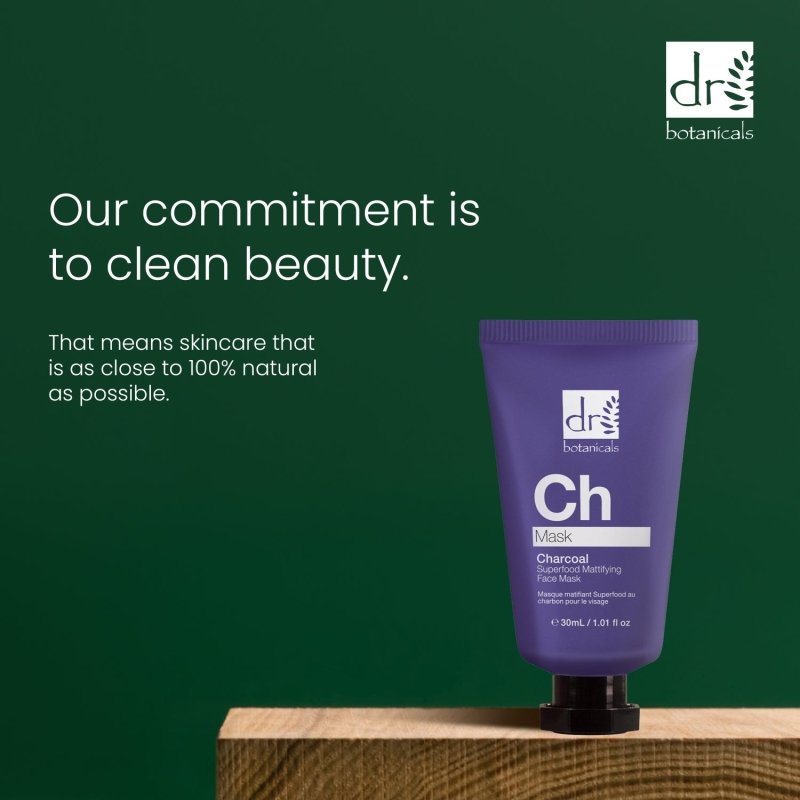
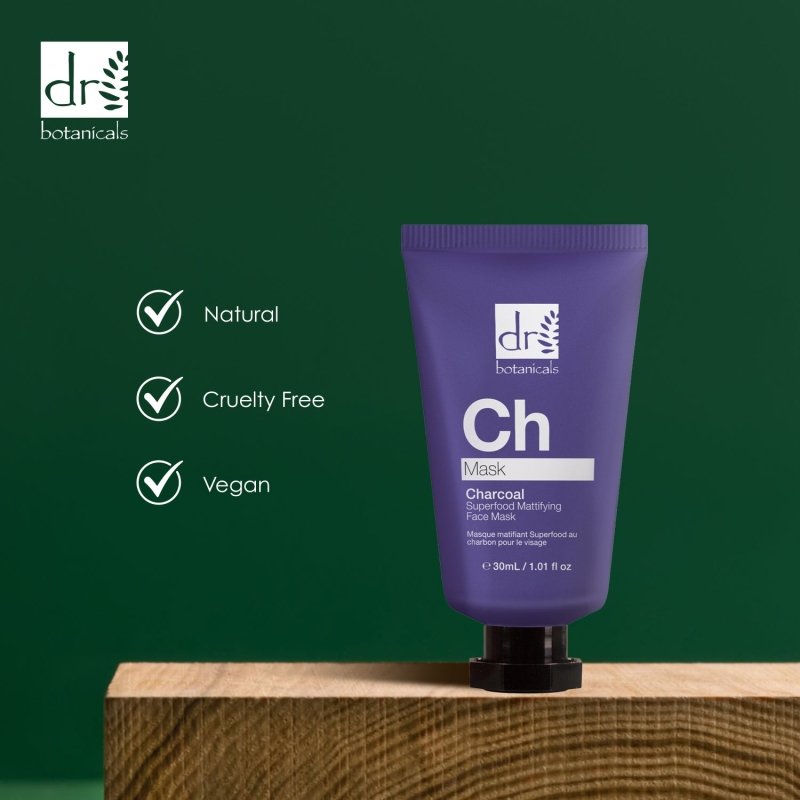
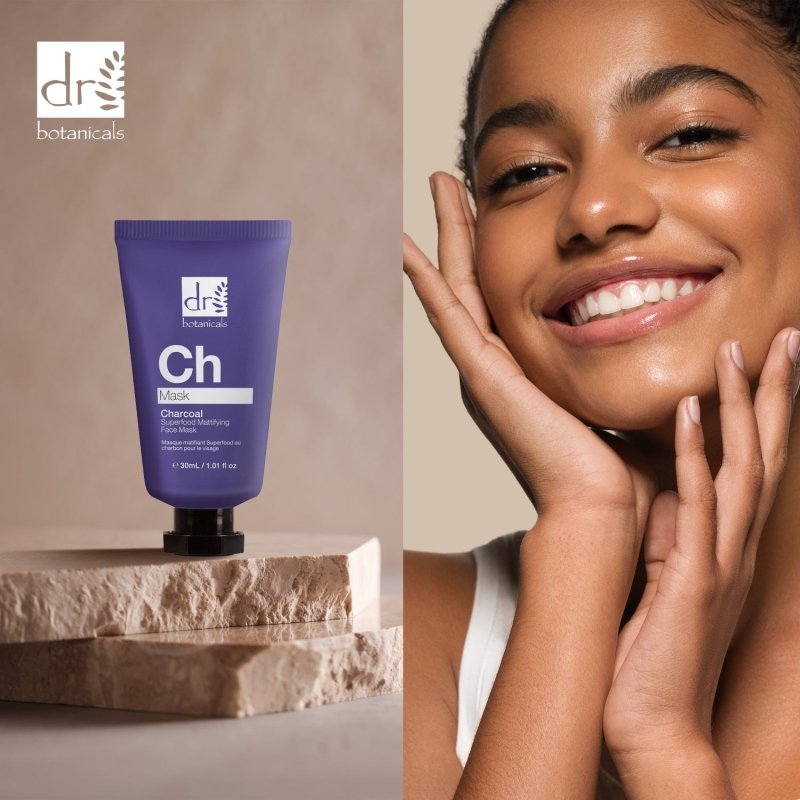
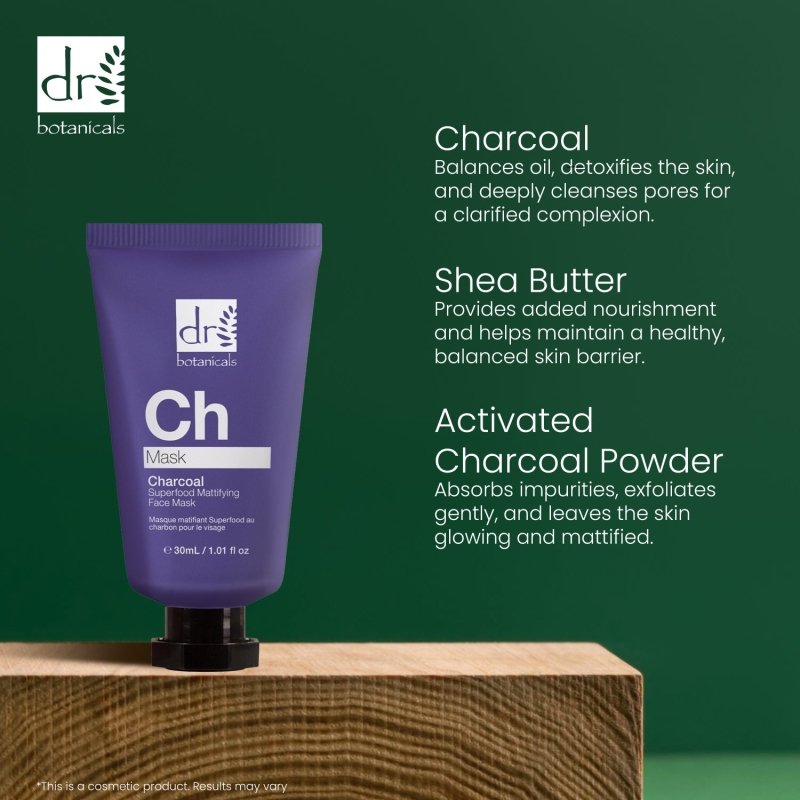
Charcoal Superfood Mattifying Face Mask
- Balances oil and detoxifies skin for a clarified complexion
- Absorbs impurities and gently exfoliates for a glowing, mattified skin
- Suitable for all skin types and promotes a healthy, balanced skin barrier
This charcoal superfood mattifying face mask is a powerful and convenient treatment that balances oil, detoxifies the skin, and deeply cleanses pores for a clarified complexion. With its creamy texture and activated charcoal powder, it absorbs impurities, exfoliates gently, and leaves the skin glowing and mattified. Formulated with shea butter for added nourishment and suitable for all skin types, this mask is the perfect choice for achieving an instant glow and maintaining a healthy, balanced skin barrier.
Choose options






🌱 DR BOTANICALS
LOVE YOUR SKIN, LOVE LUXURY.

Science-Backed Vegan Formulas
made with you in mind
Treating your skin means starting an adventure to feel your best. We've got skincare goodies just for you, packed with ingredients that science buffs would approve. Our products are totally vegan and steer clear of fake nasties. Get ready to pamper your skin with a focus on keeping it simple and pure, for a fab and glowing complexion!

